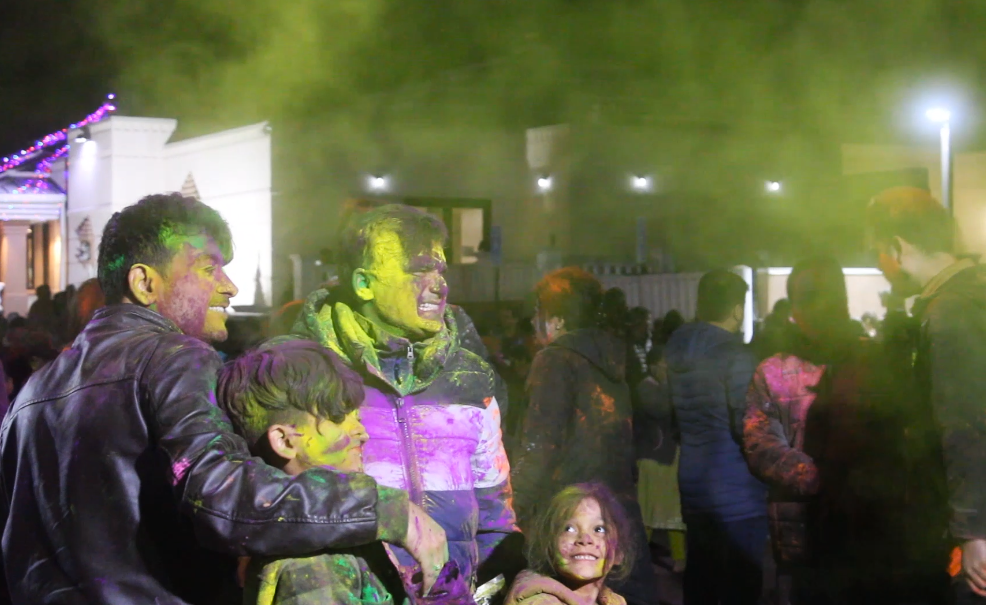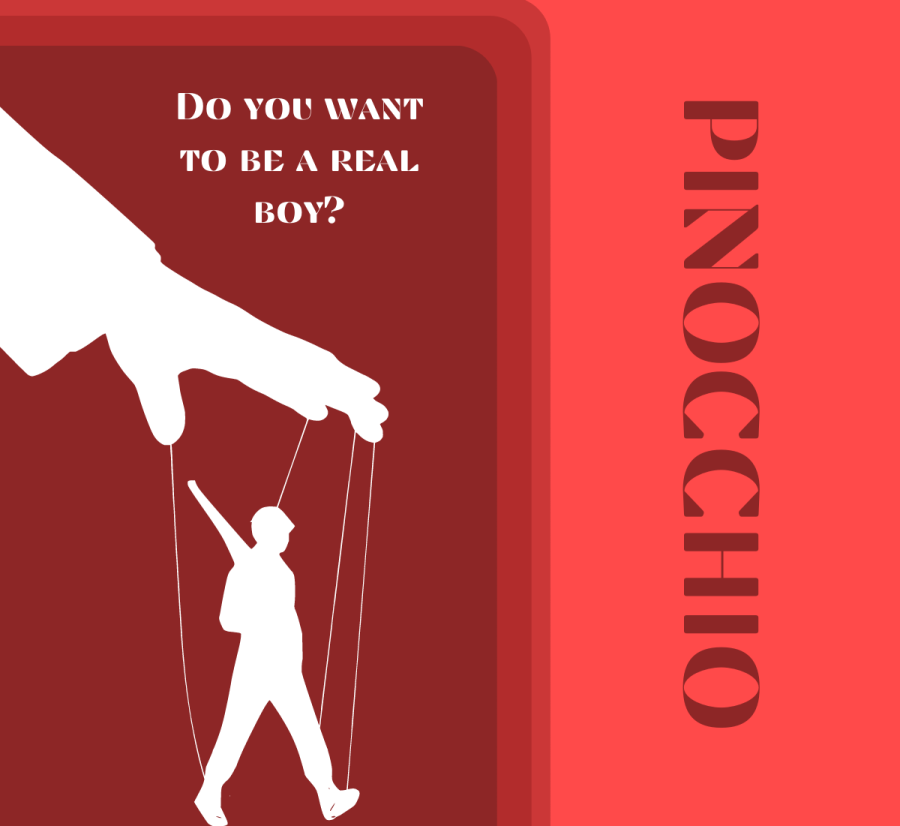I, Too, Wish I Was a Real Boy
In Guillermo del Toro’s passion project, the story of Pinocchio is retold once more in a beautiful stop-motion animation.
“Pinocchio,” directed by Guillermo del Toro, reimagines the classic Italian story with mesmerizing visuals and a charming soundtrack.
January 19, 2023
You’ve heard the classic tale of the little wooden boy who wanted to be a real boy. “Pinocchio” is a 19th-century classic Italian story that has charmed generations through numerous variations. The most recent adaptation, directed by Guillermo del Toro and released on Netflix on Dec. 9, adds a new charming feel to the story.
The story begins with a flashback narrated by an unknown voice. Taking place in the 1940s, the narrator describes Geppetto’s previous life with his son, Carlo. With emotionally sweet music, the scenes go over how much Geppetto loved his son. However, tragedy strikes when the two are about to leave their church, and the boy is killed in a bomb explosion. Geppetto’s life immediately spirals into a violent cycle of grief, depression, and alcoholism as he mourns the death of Carlo.
One fateful night, we’re met with the eccentric talking insect Sebastian J. Cricket, who describes himself as a traveler. Searching for a small abode to take shelter in, he decides to use a tree next to Carlo’s grave, but this proves to be a mistake as Geppetto once again returns to the grave to mourn the loss of his son. His sadness turns into drunken rage, and in the fit of it all, he decides to rebuild his son out of wood. He quickly grabs an ax and, to the dismay of the cricket, chops down the tree. Geppetto returns to his house with the wood and an angrily talking cricket, and then proceeds to carve out the wood into the shape of a child, but he passes out near the end of the process.
As Geppetto sleeps, Sebastian is met with a spirit who wishes to give life to the wooden figure, and is tasked to take the child on the right path. Of course, he is hesitant to accept the task, but eventually takes the challenge. In the morning, Geppetto wakes up terrified to find that the wooden figure he’d made in his drunken state had come to life. And with the wooden boy’s playful song “Everything Is New to Me,” the story of “Pinocchio” truly begins.
With a compact cast of characters, Guillermo takes a more complex interpretation of the story, making the interesting choice to have the setting take place in WWII Italy. Because of this, we’re met with interesting takes on fascist propaganda, specifically on how easy it is to indoctrinate children into this ideology. The biggest example of this is when Pinocchio performs on stage celebrating the Italian homeland and Benito Mussolini, and then he is sent to a training camp to fight for Italy.
But despite the arching presence of propaganda, the most notable theme of the movie is death. Many times we see Pinocchio “die” and return from the afterlife, which is a charming room full of hourglasses with black sand. There is a catch, however: the more times he dies, the longer he stays dead each time. This conflicts with his desire to be a “real boy” because, unlike the humans, he can come back from the dead. Despite how troubling it seems, the concept of death has given us a window into familial intimacy with emotional scenes. This window is seen clearly in the ending, which is emotional enough to make one cry.
All of this is conveyed perfectly with del Toro’s use of stop motion animation. It creates a rustic atmosphere resembling that of an old children’s book, which helps perpetuate the child-like wonder Pinocchio and the viewer feels. The most noticeable example of this is through Pinocchio himself; the way he’s animated emphasizes the contrast between his wooden features and his wide variety of expressions. Throughout the movie, the animation style subtly adds more depth to the overall themes.
Guillermo’s “Pinocchio” leaves us wondering how we begin relationships and how they end. The film makes us appreciate the people around us with beautiful animation and a wonderfully charming soundtrack. It is indeed a movie worth watching, especially with the people you love.

























![The Phoenix varsity volleyball team lines up for the national anthem. “We were more communicative [with each other] during this game, and I feel like we kept our energy up, especially after the first set,” senior Jessica Valdov said.](https://theblazerrhs.com/wp-content/uploads/2024/10/DSC_0202-1200x800.jpg)










![Junior Alex Alkhal pitches the ball. “[I] just let it go and keep practicing so we can focus on our goal for the next game to get better as a team,” Alkhal said.](https://theblazerrhs.com/wp-content/uploads/2025/05/DSC_0013-1-1200x929.jpg)
























